Column: Disneyland is ditching gas cars at Autopia. It’s a great first step for Tomorrowland
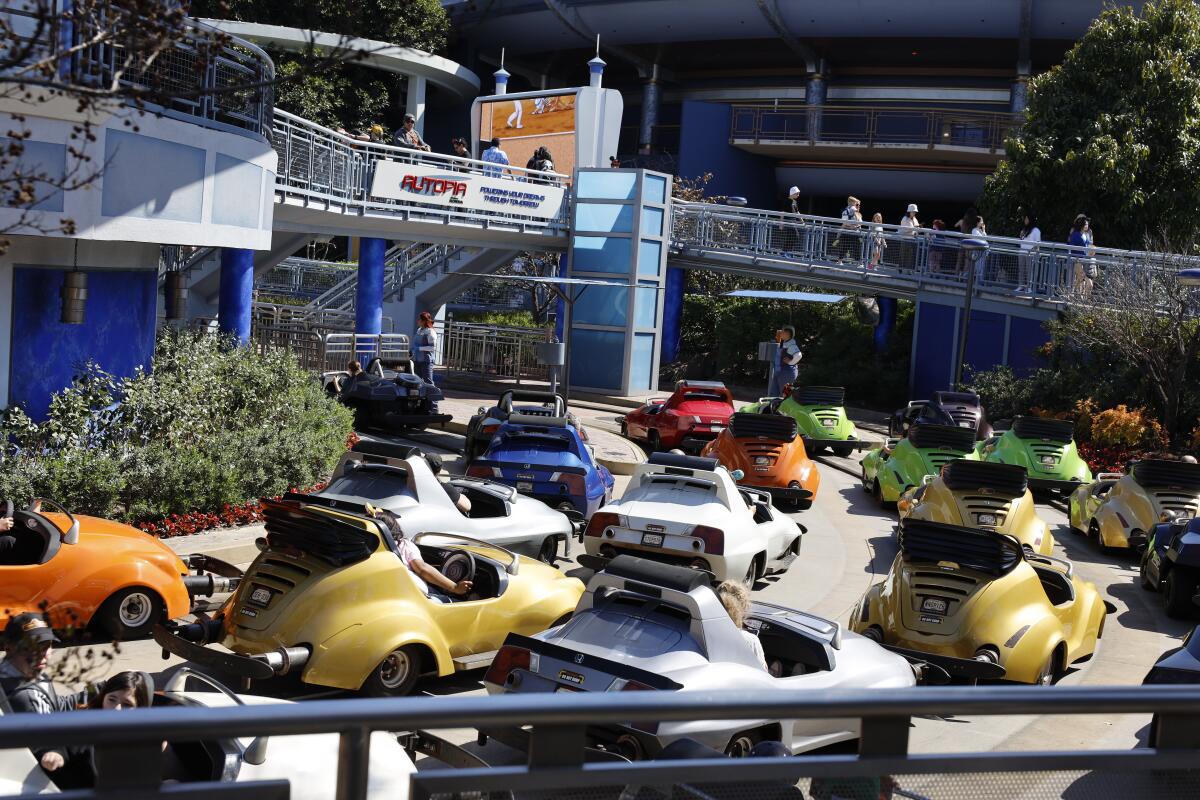
- Share via
The air tastes putrid. The traffic is terrible. The engines are loud, the oil-stained roadways ugly and antiquated.
This is Autopia, part of Walt Disney’s Tomorrowland, where kids from around the world come to dream about the future.
You're reading Boiling Point
Sammy Roth gets you up to speed on climate change, energy and the environment. Sign up to get it in your inbox twice a week.
You may occasionally receive promotional content from the Los Angeles Times.
If anyone could get away with defending the toxic odor, it might be Bob Gurr. He designed the original Autopia cars in the mid-1950s, working closely with Walt himself. He’s proud of what they built together.
But today the 92-year-old Disney legend says the polluting motors need to go.
“Get rid of those God-awful gasoline fumes,” he told me.
Disney is finally preparing to do just that.
In news shared exclusively with The Times ahead of this column’s publication — after several weeks of my prodding the company for answers on the future of Autopia — Disney officials revealed that pure gasoline engines are on their way out.
“Since opening with Disneyland park in 1955, Autopia has remained a guest-favorite most popular with young kids experiencing driving for the first time,” spokesperson Jessica Good said in an email. “As the industry moves toward alternative fuel sources, we have developed a roadmap to electrify this attraction and are evaluating technology that will enable us to convert from gas engines in the next few years.”
Good wouldn’t confirm whether that means electric vehicles, or if hybrids are a possibility. EVs would obviously be better.
But whatever comes next, this is fabulous news.
And in an ideal world, it will be just the beginning for clean energy and sustainability at Tomorrowland.
Gurr feels similarly.
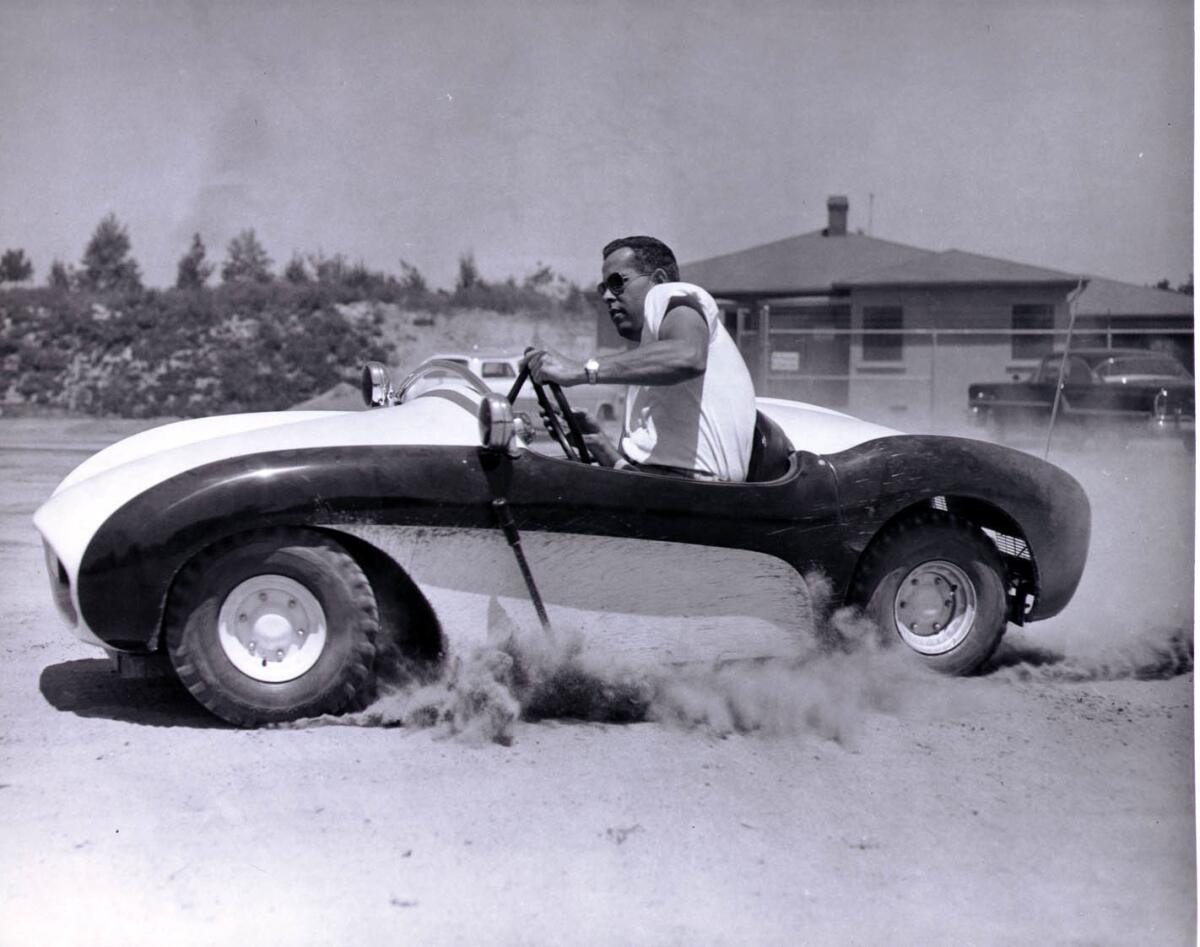
When I called him a few weeks before Disney revealed its plans, I didn’t know whether he’d agree with me that the company should ditch oil and go electric at Autopia. I wondered if he’d say that clean cars are no fun compared with gas-powered vehicles, or that politically divisive issues such as climate change shouldn’t drive decision-making at the Happiest Place on Earth.
But not only did Gurr agree with me about Autopia — he also expressed a grander vision for Tomorrowland as a hub for stories about renewable energy, public transit and other sustainable technologies that will help us create a better tomorrow.
“This has to be done with positive urging, rather than attacking and criticizing,” Gurr said.
I was thrilled to hear it. I’ve been thinking the same thing about Tomorrowland for a long time.
Let’s back up for a minute.
I care deeply about the climate crisis, hence my work as a climate journalist. I’m also a huge Disney fan.
Some environmentalists see corporations such as Disney as prime examples of capitalism run amok — of excessive consumerism and waste driving Earth to the brink of ecological catastrophe. But I can’t help but see value in this particular company.
Because for me, the Walt Disney Co. has been a lifelong source of joy and comfort.
I grew up a Disneyland passholder, making regular trips to Anaheim, singing along to Disney soundtracks and admiring the latest Disney merchandise (and yes, making the occasional purchase). I continue to derive great happiness from all those things.

And knowing what a deep impression Disney’s stories have left on me — and on hundreds of millions of people around the world — I’m convinced that the company wields unmatched power to spur unprecedented progress on the climate crisis.
I shared my hunch with acclaimed climate scientist and communicator Katharine Hayhoe. She told me I was onto something.
Hayhoe, a professor at Texas Tech University, has written and spoken extensively about the need for climate stories that go beyond gloom and doom — specifically, stories that show people their actions make a difference.
She cited neuroscience and psychology research finding that although fear can help wake us up to a problem, it can also paralyze us in terms of taking action — at least if we think there’s no hope. And although some people are motivated by sacrifice — giving up gas cars or driving fewer miles, for instance — many more can be made to worry about government taking away their pickup trucks or hamburgers or gas stoves, popular talking points for conservative politicians looking to win elections.
“We’re more afraid of losing something than we prize the benefit of gaining something new,” Hayhoe said.
Fortunately, she added, “the neuroscience is very clear that narratives are really effective at communication.” Movies, TV shows and other kinds of stories — Hayhoe serves on Netflix’s sustainability advisory group — can help “normalize” clean energy solutions such as gas-free induction stoves. And unlike news articles or social media chatter likely to be seen by climate deniers and clean energy skeptics as partisan or untrustworthy, entertainment can still help change people’s minds.
And even when changing minds isn’t possible, entertainment can help convince people worried about rising temperatures that their actions really do matter.
“Showing people what climate solutions look like is one of the most effective ways to get them to support action,” Hayhoe said, paraphrasing another scientist who studies climate communications. “That’s what you’re talking about, right?”
Indeed, this is where Tomorrowland could prove especially valuable in the fight to save the planet.
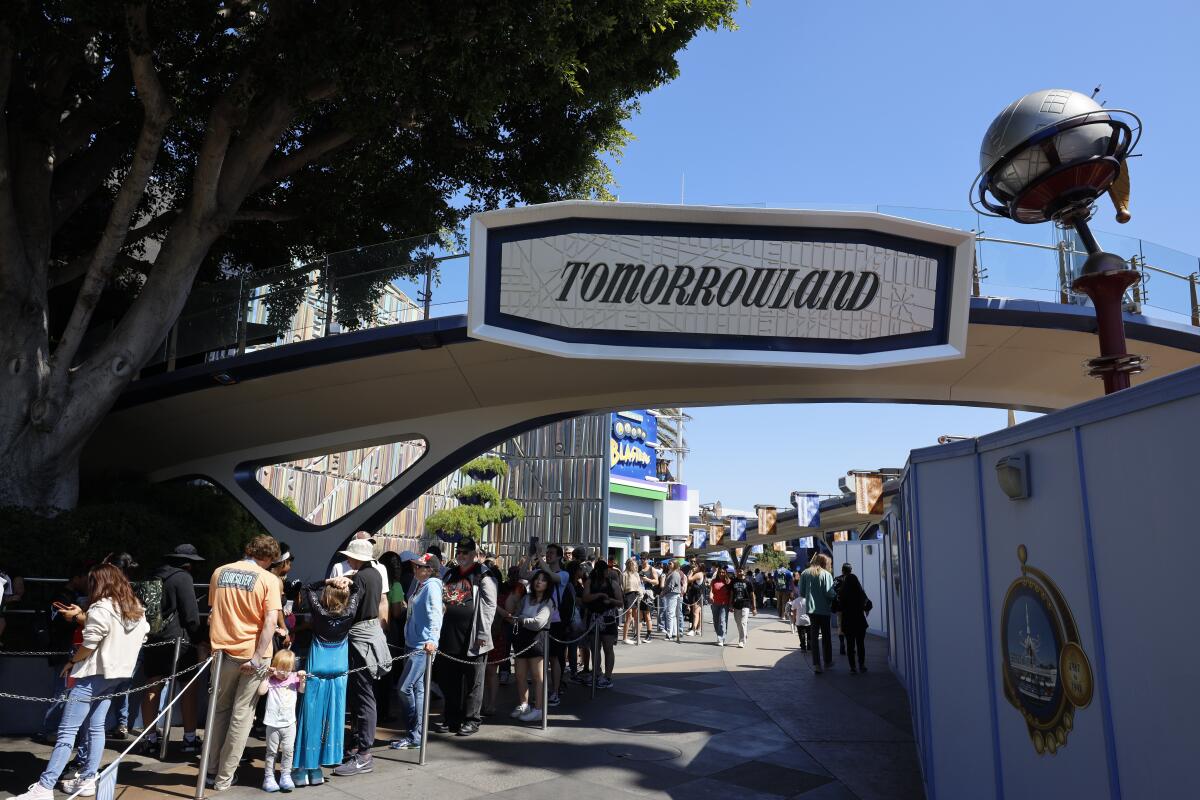
At the Anaheim park’s opening, Walt Disney called Tomorrowland “a vista into a world of wondrous ideas” and “a step into the future, with predictions of constructive things to come.” He promised it would offer “new frontiers in science, adventure and ideals.”
Nearly seven decades later, Walt’s creative heirs haven’t been living up to that promise.
I was reminded how badly they were failing early last month, when I met up with climate change activists Zan Dubin and Paul Scott outside Disneyland’s entrance. They had filed complaints about Autopia’s noxious fumes with two regulatory agencies, worried about possible health problems for Disney employees working the ride and guests waiting in line.
They also had messaging concerns.
“Showing small children these God-awful, loud, gas-burning cars in Tomorrowland — it tells them that burning gasoline is OK,” Scott said. “Going forward, we cannot have that. Those children need to grow up telling their parents to get an electric car.”
“They have a huge megaphone and can set a good example or a dangerous example,” Dubin added.
One of the regulatory agencies that Dubin and Scott contacted, the California Air Resources Board, declined to comment for this story. A spokesperson for the other agency, the South Coast Air Quality Management District, told me Disneyland “is considered private property, and attraction goers are not obligated to remain near the ride; therefore, this would not be considered a public nuisance in the same way that we evaluate emissions impacting local children at schools or nearby residents in their homes.”
As for Disney employees, the spokesperson told me in an email that a different government agency “has jurisdiction over worker safety and would be the agency responsible to investigate the job conditions of those who work the ride.”
Within the next few years, those health questions should be moot. For now, though, they’re alive and well.
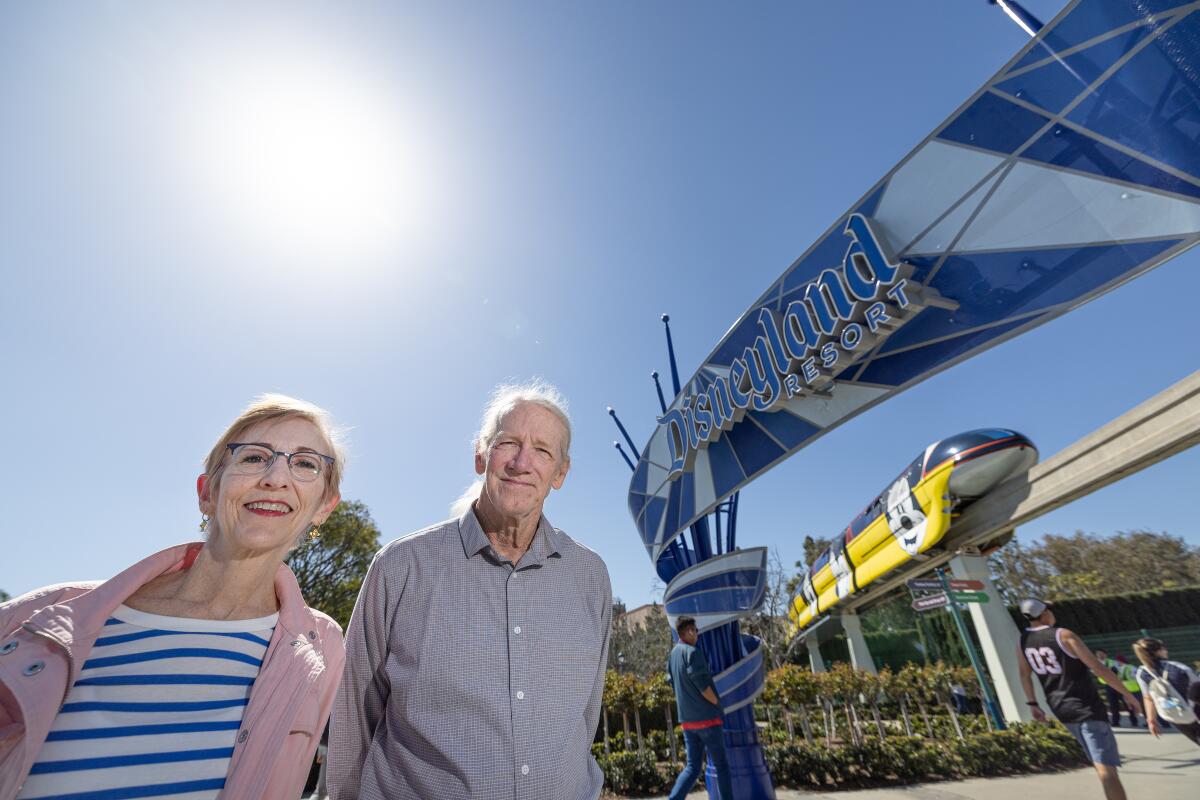
A few minutes after talking with Dubin and Scott, I scanned my Disneyland pass and sauntered over to Autopia. I hadn’t ridden the attraction in years, and I’d forgotten how disgusting it smells. Even waiting in line, I found breathing could be uncomfortable.
I knew the drive wouldn’t be much fun — not for an adult who has already spent too much of my life stuck on clogged freeways and pressing my foot to the gas. Not to mention that the steering is clunky and the speed limit a measly 6.5 mph.
The worst part was the end, waiting behind a line of cars to exit. It felt like sitting in traffic on the 405 with the windows open.
When I finally got out, I asked the nearest cast member — Disney parlance for “employee” — how she stands the stench.
“You just get used to it,” she told me blandly.
Thank goodness future cast members won’t have to get used to it anymore. Thank goodness electrification is coming.
Seriously, this is an emergency: Cars, trucks and other modes of transportation are America’s biggest source of heat-trapping pollution. They also belch tiny, invisible particles that can make living too close to freeways deadly.
Now when Disney trumpets its climate commitments — which include the admirable goal of net-zero planet-warming carbon emissions at the Disneyland Resort by 2030 — the company won’t be undermining itself by teaching kids and their parents that pumping oil into a tank is the way of tomorrow.
To be clear, Disney should have converted Autopia to electric years ago. The ride’s 2016 overhaul would have been the perfect time.
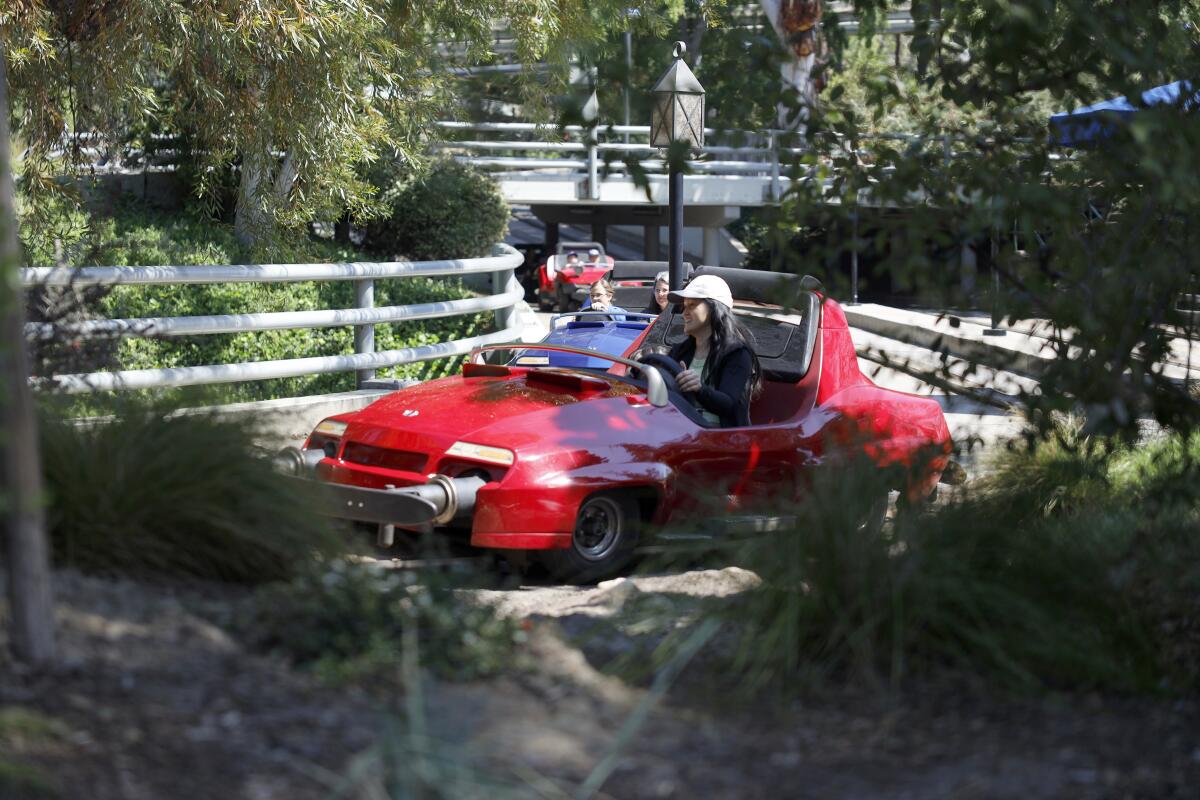
Still, the company’s announcement is a huge victory. And hopefully there’s more to come for Tomorrowland.
Disney fans agree that this section of the park badly needs change. It’s been a quarter-century since the land’s last big overhaul. There are a few great attractions, Space Mountain and Star Tours in particular. But the overall feel is stale and disjointed. There’s no cohesive vision, no deeper magic. The storytelling is sorely lacking. There’s loads of wasted space.
Disney executives should let sustainability ride to the rescue, with a buzz of optimism and futuristic energy.
Electric vehicles at Autopia are the obvious starting point. Solar-panel shade structures over the line would be great too.
Next, how about using the former Innoventions building, which once displayed futuristic technologies but is now closed to most guests, to showcase solar panels, lithium-ion batteries and other clean energy devices that guests might want in their homes?
Why not switch to electric cooking at the Alien Pizza Planet restaurant, and offer induction stove demos for diners?
Maybe start screening some National Geographic films (Disney owns NatGeo) at the largely unused Magic Eye Theater?
There’s all sorts of stuff Disney could do with public transit, too.

The Disneyland Railroad and the Monorail transit line — which ferries guests between Disneyland and the Downtown Disney shopping area — already run right past Autopia. Especially if Disney built a new ride for the old PeopleMover tracks, which also intersect with Autopia, the company could fill Tomorrowland with the excitement of constant motion.
Add some infotainment-style signs and voice-overs about the wonders of clean energy and public transit, and boom, you’ve got a Tomorrowland that should leave kids and their parents excited to help build a safer, happier, more sustainable world.
Maybe that sounds absurdly idealistic and totally outside the realm of possibility for Disneyland.
Then again, tell that to Bob Gurr. It’s his vision for Tomorrowland, too.
He was a Disney Imagineer for decades, helping design classic rides such as the Haunted Mansion and the Matterhorn Bobsleds. He told me that if he could, he’d tear out everything in Tomorrowland except the Monorail and rebuild it as a version of the public transit-oriented futuristic city that Walt once planned for Florida — only with clean energy at the core of its storytelling.
Barring such a massive shift, Gurr thinks guests would enjoy a Tomorrowland with brighter colors and more kinetic energy, where they could “hear these whirring sounds like little tiny jets and turbines all over the place.” At the very least, he said it’s time for an Autopia where guests “don’t smell the fumes, don’t hear that racket of the little motor going putt-putt-putt.”
“I’d love to have really sexy-sounding electric cars,” Gurr told me.
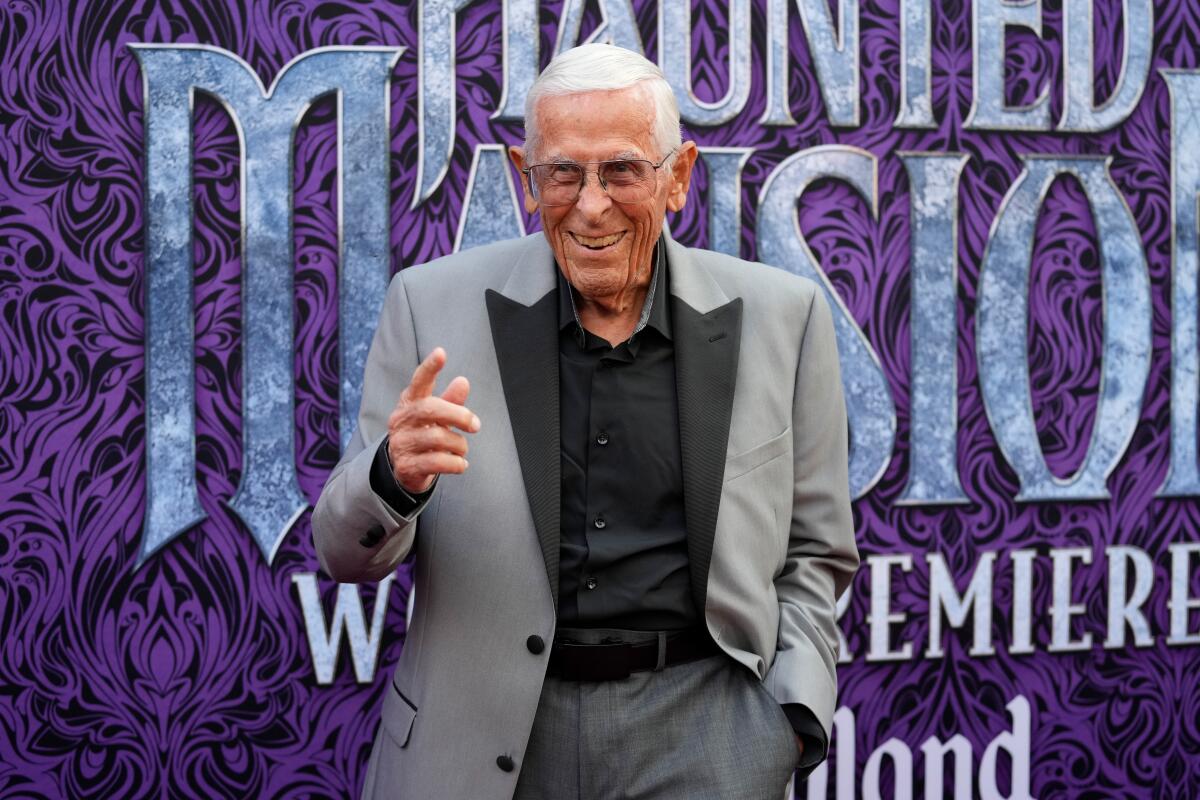
Would some potential visitors be offended by a Tomorrowland that’s all about sustainability? Sure. For people who consider climate change a hoax or solar power a scam, the idea of Tomorrowland as a clean energy hub might be reason to visit another theme park. (Or not. It’s hard to say no to Disney.)
But some folks were offended when Disney shut down Splash Mountain because of the racist film that inspired the popular ride, and made plans to replace it with an attraction based on the company’s first Black princess. Disney moved ahead despite their protests. The company also opposed Florida’s “Don’t Say Gay” law after many employees spoke up against it.
There’s no reason Disney executives couldn’t do the same here, accepting that some critics would gripe about sustainability at Tomorrowland but knowing that far more fans would absolutely love it — and that the move would probably win Disney some new fans, too.
And by the way, this isn’t a newfangled vision for Tomorrowland.
In its early years, Walt used Tomorrowland to sell guests on technologies poised to change the world — for better or, ultimately, for worse. The House of the Future attraction, sponsored by Monsanto, ran from 1957 until 1967 and was basically a glorified advertisement for plastics. In a more positive example, Tomorrowland once featured a gorgeous energy-themed mural, designed by legendary Disney Imagineer Mary Blair, that spotlighted solar and wind power, long before their time.
The land was also home to the General Electric Carousel of Progress, which made the case that electric appliances could make life at home easier and more comfortable and thus deliver a “great big beautiful tomorrow,” to quote the ride’s iconic song.
In a grand coincidence, the Carousel of Progress was also decades ahead of its time. Today we absolutely need more electricity in our lives — not just electric cars but also heat pumps and induction stoves, to replace gas appliances that fuel climate change.
And not that it’s my job to make money for Disney, but I’m sure the company could find sponsors for this vision of Tomorrowland. There are plenty of renewable energy companies, electric utilities and environmental groups eager to tout their causes and their credentials.
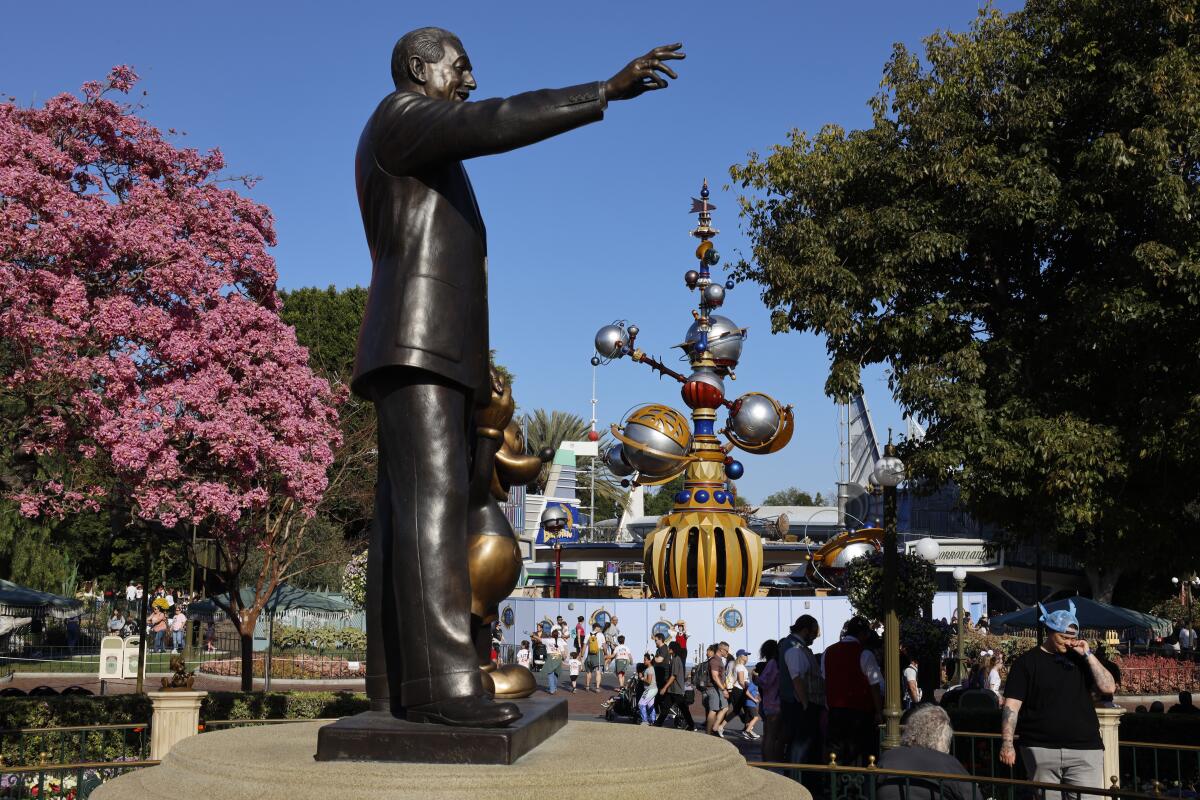
There are other reasons this is the right moment for Disney to revamp Tomorrowland.
The company says it will invest $60 billion in its parks, resorts and cruises over the next decade, as they’ve become reliable moneymakers amid continued losses on the streaming side of the business. This week, meanwhile, Chief Executive Bob Iger and his allies on the Disney board are expected to defeat a challenge from billionaire investor Nelson Peltz, who has teamed up with former Marvel Entertainment head honcho Ike Perlmutter to try to undermine Iger’s leadership.
That should give Iger relatively free rein to do whatever he wants through the end of 2026, when his contract expires.
And the longtime Disney CEO has made clear, in the past, that he wants to do something about the climate crisis.
When then-President Trump withdrew the U.S. from the Paris climate accords, Iger resigned from a White House advisory council in protest. A few years later, Iger said he was “particularly proud” of the company’s new solar field in Florida, writing that it could “generate enough clean energy to power two of the four theme parks at Walt Disney World.”
But as valuable as it is that Iger and his lieutenants have pursued traditional corporate social responsibility initiatives — cutting emissions, preserving forests, reducing water use — Disney could do even more through its storytelling.
Even Iger has acknowledged as much.
Iger has said that for Disney, entertainment must come before messaging — and I think he’s right. But I was pleasantly surprised to find a 2010 video interview in which he made the case that the company has a “unique opportunity” to reach millions of young people and “teach them of the importance of behaving in a more responsible way from an environmental perspective.”
Again — it starts with Autopia, but it’s bigger than Autopia. Bigger than Tomorrowland, even.
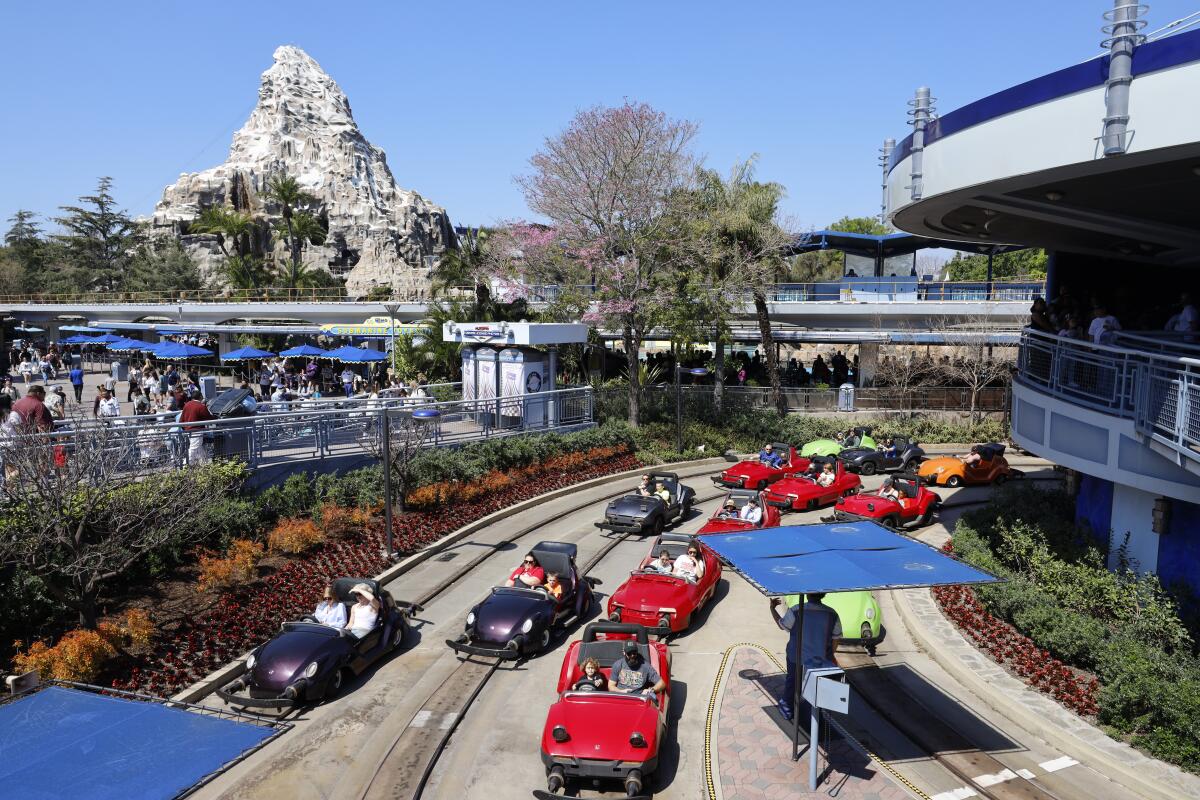
As I’ve written previously, there’s a movement in Hollywood to encourage production of movies, TV shows and other stories that reflect the world as it actually exists — which is to say, a world that’s getting hotter, but that we still have the power to save. Not every story needs to be about climate change or clean energy. But more stories should at least acknowledge their presence.
If Disney could commit to that way of thinking, even on the margins, the implications could be huge.
If the world’s most influential storytellers could sprinkle a little bit of pixie dust on the greatest challenge humankind has ever faced, they could go a long way toward helping us turn despair into hope.
“To all who come to this happy place: welcome,” Walt Disney said on the day his first park opened. “Disneyland is your land. Here age relives fond memories of the past, and here youth may savor the challenge and promise of the future.”
Today, the promise of the future is riding on clean energy. It’s riding on climate action.
So let’s charge our electric cars, take a few deep breaths free of smog, and start building a better Tomorrowland.
This column is the latest edition of Boiling Point, an email newsletter about climate change and the environment in California and the American West. You can sign up for Boiling Point here. And for more climate and environment news, follow @Sammy_Roth on X.
Toward a more sustainable California
Get Boiling Point, our newsletter exploring climate change, energy and the environment, and become part of the conversation — and the solution.
You may occasionally receive promotional content from the Los Angeles Times.




